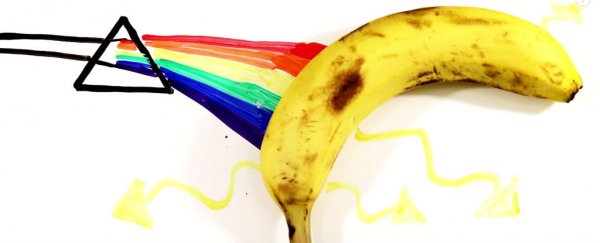
Alright, here's a pretty neat trick. Press play on the AsapSCIENCE video above, and set it to full screen. Then, when you get the prompt, stare at the little green dot in the centre. And I mean stare - try not to blink too much. If you're lucky, you'll see a really cool optical illusion, and you know the best part? The science behind it is even more interesting than the way your mind just melted right now.
If you stare at the green dot for long enough while seeing the inverted colours in your periphery, when you're shown a black and white image, you'll not only see colour, but you'll see the original - not inverted - colour. But how?
The phenomenon is known as 'after imaging', and occurs when the three cone cells in your retinas slowly become fatigued from being exposed to a lot of colour. Those three cone cells are sensitive to three different wavelengths of light - blue, red, and green.
Basically, just like a printer, the supply of photopigment in the respective cones will become exhausted if you stare at certain colours for too long. Once this happens, the cone cells can no longer send signals to the brain about the wavelengths of light they're perceiving.
This means that while you were staring at the green dot, your cones were becoming depleted in the inverted colour supplies. Then, when the black and white image hits, the cones that weren't depleted will kick in. So what was inverted becomes normal again.
"In the case of this illusion, in the part of the photo where you see cyan, the green and blue cones become tired, and as a result, there is increased activity in the unfatigued red cones," the boys from AsapSCIENCE explain. "So when the image switched to black and white, we see red, cyan's complementary colour."
Neat, huh? But that's not the only way your cones mess with your perception of colour. In fact, given the fact that you're reading this on a computer screen right now, it means your brain is being taken for a ride as you read this.
I'll let the video above explain that to you, but let's just say that banana in the image above isn't actually yellow, and you're about to finally figure out why so few flowers are green. Nature, you are a tricky one.
Try this one next:

